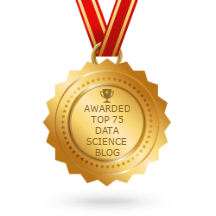- Hierarchical, Divide and Conquer strategy, Supervised algorithm
- Works on numerical data
- Concepts discussed - Information gain, entropy computation (Shanon entropy)
- Pruning based on chi-square / Shannon entropy
- Convert all string / character into categorical / numerical mappings
- You can also bucketize continuous variables
August 31, 2016
Day #29 - Decision Trees
Labels:
Data Science
August 15, 2016
Day #28 - R - Forecast Library Examples
Following Examples discussed. Library used - R - Forecast Library
- Moving Average
- Single Exponential Smoothing - Uses single smoothing factor
- Double Exponential Smoothing - Uses two constants and is better at handling trends
- Triple Exponential Smoothing - Smoothing factor, trend, seasonal factors considered
- ARIMA
Labels:
Data Science Tips
August 08, 2016
Applied Machine Learning Notes
Supervised Learning
- Classification (Discrete Labels)
- Regression (Output is continuous, Example - Age, Stock prices)
- Past data + Past Outputs used
- Dimensionality reduction (Data in higher dimensions, Remove dimension without losing lot of information)
- Reducing dimensionality makes it easy for computation (Continuous values)
- Clustering (Discrete labels)
- No Past outputs, Only current data
- All Game Playing is unsupervised
- Learning Policy
- Negative / Positive reward for each step
- Inductive (Learn model, Learn from a function) vs Transductive (Lazy learning ex- Opinion from like minded people)
- Online (Learn from every new incoming tweet) vs Offline (Look past 1 Yeat tweet)
- Generative (Apply Gaussian on Data, Use ML and compute Mean / Variance) vs Discriminative (Two sides of Line)
- Parametric vs Non-Parametric Models
Labels:
Class Notes
Subscribe to:
Comments (Atom)










